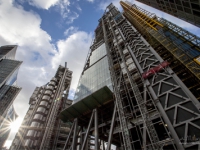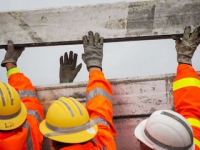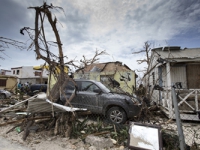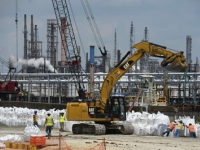Impacts on construction have been spotty from the hurricanes (including Maria, which devastated Puerto and the U.S. Virgin Islands in September) and four severe wildfires in California (with more than 8,300 buildings severely damaged or destroyed).
Construction spending totaled $1.220 trillion at a seasonally adjusted annual rate in September, 0.3% higher than in August, and 2.0% higher y/y than the September 2016 rate, the Census Bureau reported on Wednesday. Public construction increased 2.6% for the month but declined 1.6% y/y.
November 06, 2017
Inflation-adjusted gross domestic product (real GDP)—the value of all goods and services produced in the U.S., net of imports—increased 3.0% at a seasonally adjusted annual rate in the third quarter of 2017 (2017Q3), following a 3.1% rise in Q2, the Bureau of Economic Analysis reported on Friday. Real private fixed investment in nonresidential structures slumped 5.2% (vs. a 7.0% gain in Q2).
November 01, 2017
Seasonally adjusted construction employment rose in 35 states and the District of Columbia from September 2016 to September 2017, fell in 14 states and was unchanged in Idaho, an AGC analysis and map of BLS data released on Friday showed. The largest percentage gains occurred in Oregon (15%, 13,500), followed by Rhode Island (14%, 2,500 jobs), Nevada (13%, 9,700) and Louisiana (11%, 14,700).
October 25, 2017
The producer price index (PPI) for final demand in September, not seasonally adjusted, increased 0.4% from August and 2.6% year-over-year (y/y) from September 2016, the Bureau of Labor Statistics (BLS) reported on Thursday. AGC posted tables and an explanation focusing on construction prices and costs. Final demand includes goods, services and five types of nonresidential buildings that BLS says make up 34% of total construction.
October 20, 2017
Nonfarm payroll employment in September declined by 33,000, seasonally adjusted, from August but increased by 1,777,000 (1.2%) year-over-year (y/y), the Bureau of Labor Statistics (BLS) reported today. The unemployment rate fell to 4.2% from 4.4% in August. BLS noted, "A sharp employment decline in food services and drinking places and below-trend growth in some other industries likely reflected the impact of Hurricanes Irma and Harvey."
October 09, 2017
Construction spending totaled $1.218 trillion at a seasonally adjusted annual rate in August, 0.5% higher than in July, and 2.5% higher year-over-year (y/y) from the August 2016 rate, the Census Bureau reported Monday. Public construction increased 0.7% for the month but declined 5.1% y/y.
October 04, 2017
Unlike the damage caused by Harvey in Texas and Louisiana, which resulted mostly from flooding, much of the damage from Irma was from extreme winds that tore off roofs, blew out windows and brought down power lines.
September 13, 2017
It is too early to know what impact the devastation from Hurricane Harvey will have on construction materials prices and supply. There have been immediate price surges for motor fuels because of refinery shutdowns; these will affect supply all along pipelines to the Southeast, Mid-Atlantic and Midwest that depend on Gulf Coast production or imports.
September 06, 2017
Filling craft positions and some salaried positions remains as great a challenge for contractors as it was a year ago, according to participants in AGC's 2017 Workforce Survey, released on Tuesday.
August 31, 2017






















